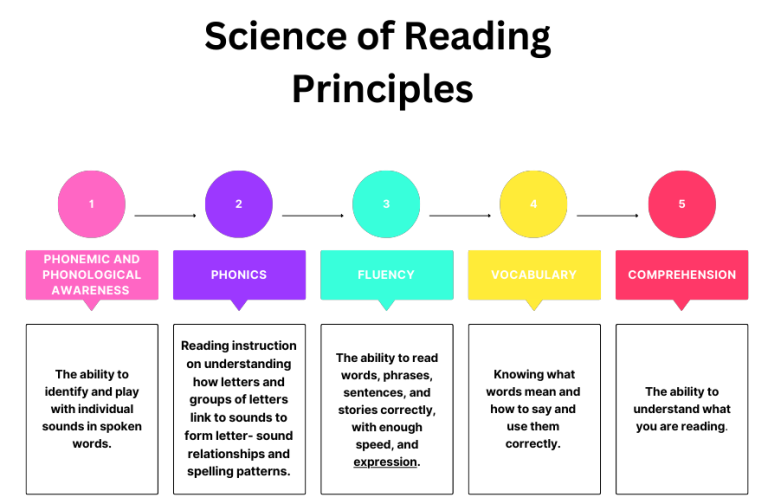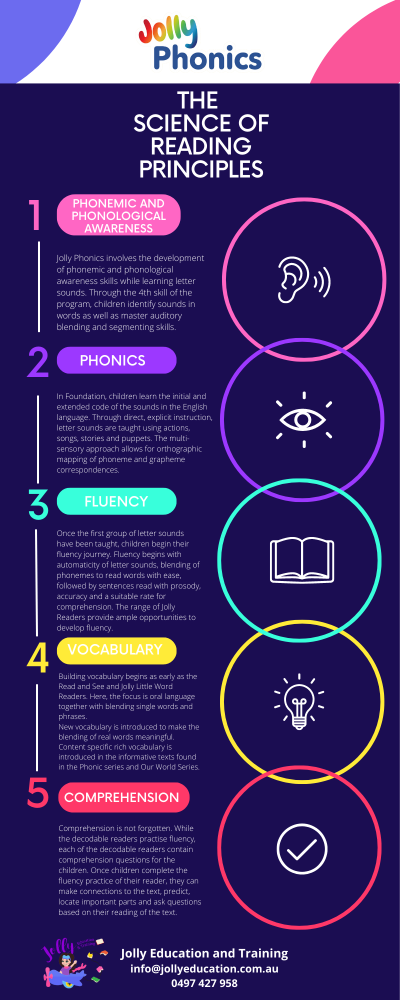Science of Reading
What is the Science of Reading?
The science of reading is a body of research that focuses on understanding how individuals learn to read and how reading instruction can be optimised. It incorporates findings from various disciplines, including cognitive science, linguistics, and educational psychology. The key principles of the science of reading emphasise the importance of phonological awareness , phonics, fluency, vocabulary development, and comprehension skills in effective reading instruction.

Jolly Phonics aligns with the science of reading in the following ways:
-Systematic and Explicit Instruction: Jolly Phonics provides a structured and sequential approach to teaching phonics. It introduces letter sounds in a specific order, starting with the most commonly used sounds. The program follows a systematic progression, ensuring that children master foundational skills before moving on to the extended phonetic code
- -Phonics and Phonological Awareness: Jolly Phonics emphasises the connection between letters and sounds. It teaches children to recognise and manipulate individual sounds (phonemes) in spoken words, helping them develop phonological awareness. By understanding the relationship between sounds and letters, children can decode and encode words more effectively.
- -Multi-Sensory Approach: Jolly Phonics incorporates multi-sensory techniques to engage children in the learning process. It uses actions, songs, and kinesthetic movements to accompany each letter sound, helping children associate sounds with visual and physical cues. This multi-sensory approach reinforces learning and supports memory retention.
- -Blending and Segmenting: Jolly Phonics teaches children how to blend individual sounds together to read words and segment words into their constituent sounds for spelling. These skills are essential for phonemic awareness and decoding, which are key components of proficient reading.
- -Sight Words and Tricky Words: In addition to phonics instruction, Jolly Phonics introduces high-frequency, irregular sight words (also called tricky words) that cannot be easily decoded using phonetic rules. By teaching the irregular parts of these words, children develop orthographic mapping and increase their reading fluency.
Jolly Phonics incorporates explicit and direct instruction strategies to teach reading and writing in a clear and organised way. Teachers show students how to pronounce letter sounds and use actions or gestures to help them remember. Students practice the skills with guidance from the teacher and get feedback to improve. Jolly Phonics teaches letter sounds in a specific order and gradually introduces the extended code.
